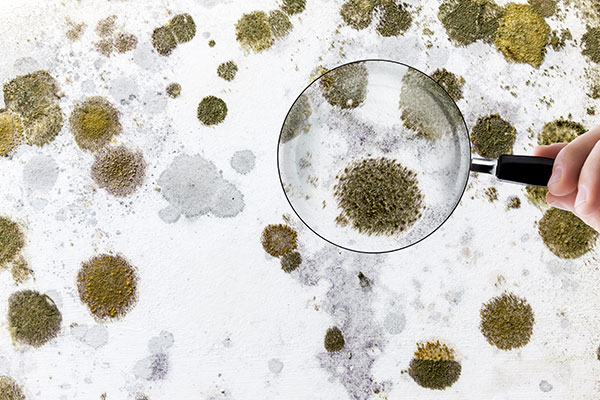Homes
Already have an Account? Sign In
Businesses
Commercial services are estimated onsite. Please click below to schedule your estimate.
3 Disgusting Facts About Mold
Untreated water damage in your home is dangerous for a lot of reasons, but one of the more repulsive risks comes from what grows in a water-damaged environment: Mold. Green, brown, black, slimy, grimy, nasty mold. Don’t think mold is a big deal? Here are just a few disgusting facts about mold that will convince you otherwise.
Mold can begin growing in as little as 24 hours!
There are only 3 things that mold requires to start growing: moisture, oxygen, and organic material. Left untreated, standing water can quickly become a breeding ground for mold spores. In as little as 24 hours, mold will form under these ideal conditions. What you can do: Basements, bathrooms, kitchens, and other rooms with plumbing and/or high moisture are particularly susceptible to mold growth, so be especially vigilant in these areas! If you see any dampness, moisture, or water in or around porous materials (like drywall), take care of it (or call a professional) as soon as humanly possible.
Mold can be dangerous to your health!
While some strains of mold are completely harmless, you definitely don’t want Aspergillus or Stachybotrys (Black Mold) proliferating in your home! These are only 2 of the thousands of strains of mold that cause adverse health effects; they’re just the most common. Besides looking gross, the Institute of Medicine (IOM) found that these varieties of mold have been known to cause upper respiratory tract symptoms, cough, wheezing, and increased risk of asthma and asthma-related symptoms. And that doesn’t even touch on people who are allergic to mold spores! Severe reactions can range from fever and shortness of breath to mold infections in the lungs. Not fun! What you can do: Reduce your risk of mold formation by removing water and drying flooded areas as soon as possible. Bacteria exist on a microbial level, so it can hide anywhere: beneath carpet, under baseboards, in drywall, between strips of moulding – anywhere water, organic material, and oxygen all reside. That’s why it’s critical to make sure every square inch of the affected area is dried as thoroughly and quickly as possible!
Mold produces trillions of spores!
Mold spores are microscopic and cannot be seen with the naked eye. A mold colony can produce trillions of these spores, and they all spell bad news. Once a colony starts producing spores, the slightest disturbance sends these tiny “seeds” airborne, spreading them throughout an area. Think the cow in “Twister”, except there’s a few hundred million more flying around. What you can do: Unless you have had extensive mold removal training, call a professional. A certified mold remediation specialist will take the necessary precautions to ensure the mold doesn’t spread and make the growth problem worse. Containment is the name of the game! Bottom line, what you don’t know about mold can hurt you, especially if you try to clean it up yourself. It's not advisable to DIY; let the mold remediation experts save your home, your health, and your sanity!
